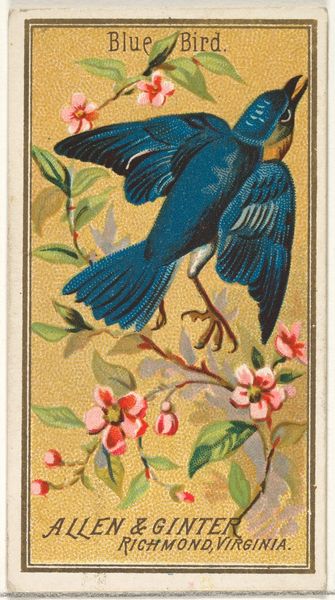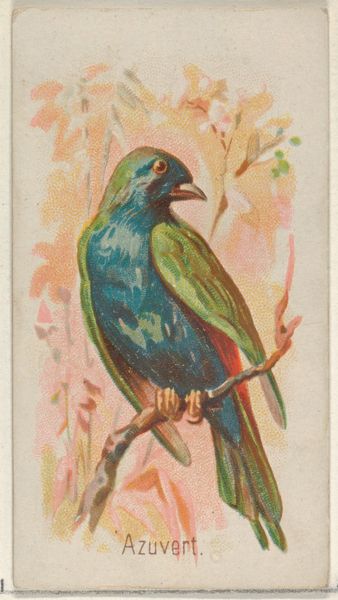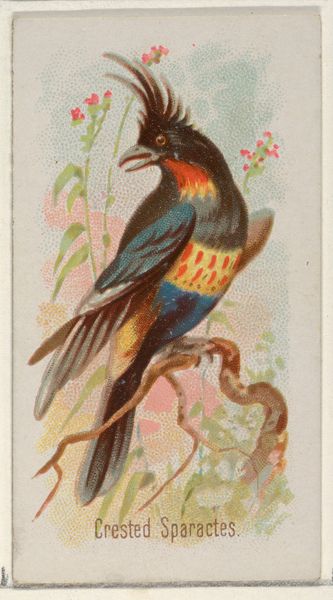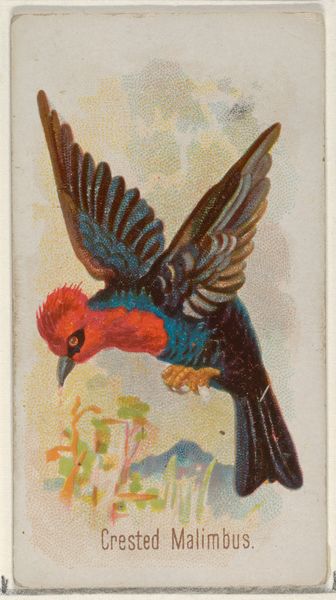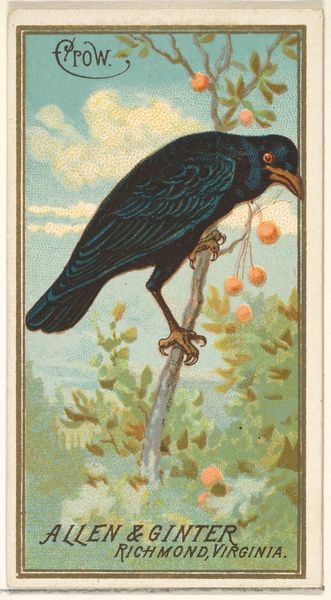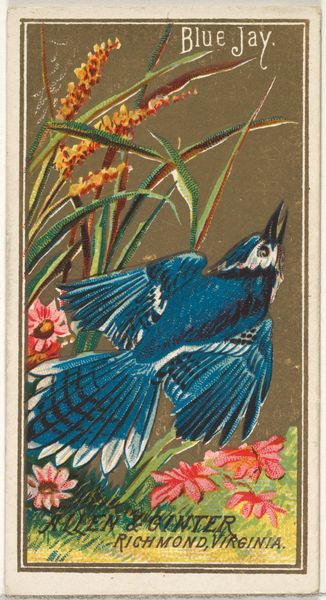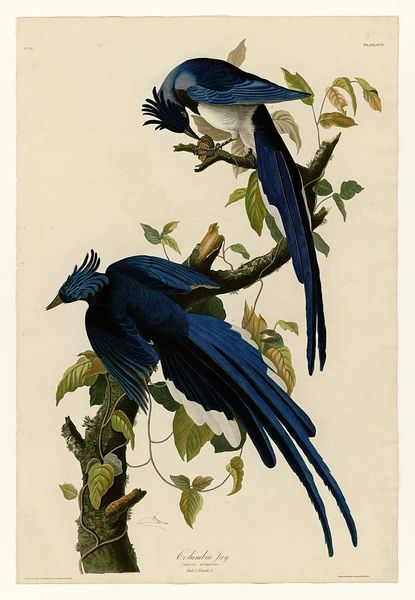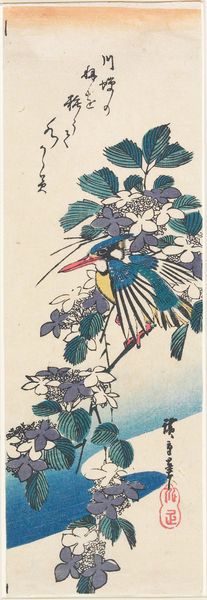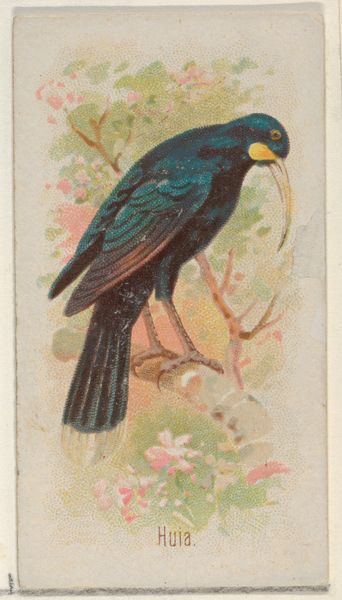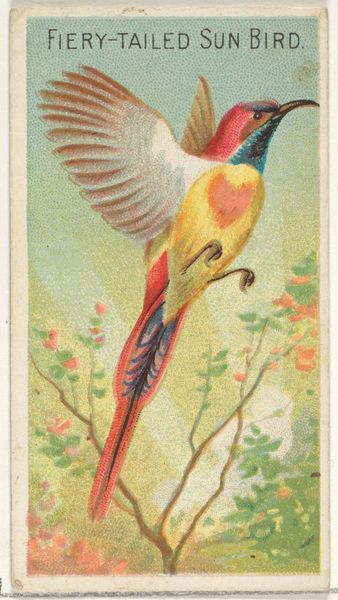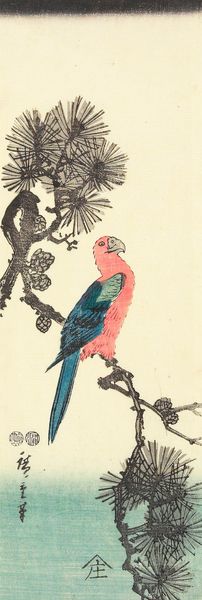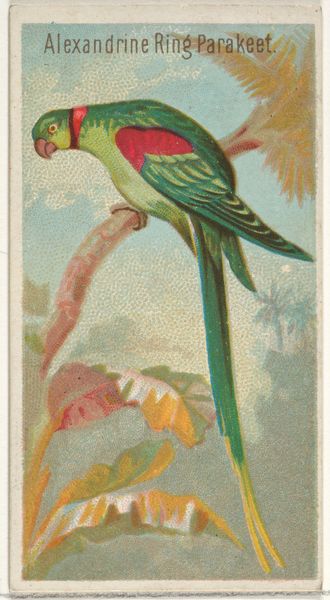
Dimensions: height 262 mm, width 95 mm
Copyright: Rijks Museum: Open Domain
Editor: We're looking at "Red and Blue Parrots," a print made sometime between 1925 and 1936 by Ohara Koson. I find the contrast between the vividly colored birds striking against the softer foliage. What initially catches your eye in this piece? Curator: The parrots themselves are powerful symbols, laden with cross-cultural significance. Parrots often represent mimicry, communication, and even immortality in various traditions. Considering this print aligns with the Shin-Hanga movement, it aimed to revitalize traditional Ukiyo-e art for a modern audience, what cultural messages do you think the artist wanted to convey through this blend of the traditional and exotic? Editor: That's interesting, I hadn't thought of the parrot as more than just a pretty bird. Maybe it’s a commentary on cultural exchange, a blend of Japanese artistry depicting a non-native creature? The mimicry aspect is compelling. Curator: Precisely. Look closely at how Koson renders the plumage, the almost iridescent quality of the blue parrot contrasted with the fiery red. Color holds considerable symbolic weight. In Eastern traditions, blue often signifies tranquility and immortality, while red can represent passion, good fortune and protection. Does that influence how you see the overall narrative now? Editor: It does! It almost feels like a balance, doesn't it? The fiery red balanced by the cool blue. Perhaps it’s about harmonizing opposing forces. I originally just saw a pretty picture of some birds. Curator: And now? Editor: Now I see layers of meaning embedded in the color and the subject. It's like Koson used the parrots as vessels for deeper cultural ideas. Thanks, I never would have picked that up on my own.
Comments
No comments
Be the first to comment and join the conversation on the ultimate creative platform.
